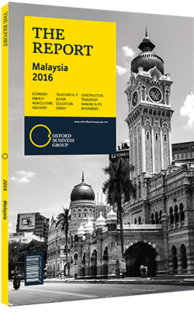Malaysian state plays a major role in plans to boost connectivity
Improving logistics and connectivity is a key element of the next phase in Johor’s development. Progress has been made in expanding highways to reduce travel times between the state capital, Johor Bahru, and its towns and resorts, but the authorities are intensifying efforts in line with plans to transform Johor Bahru into Malaysia’s second city. The New Coastal Highway, the Eastern Dispersal Link Expressway and the Senai-Pasir Gudang-Desaru Highway have all shortened journeys.
Rail
The most transformational projects are likely to be the high-speed rail (HSR) between Kuala Lumpur and Singapore, which will stop in Iskandar Puteri along the way, and a rapid transit system (RTS) link that will connect Johor Bahru to Singapore’s mass rapid transit (MRT). A double-tracking project between Gemas and Johor Bahru, due for completion in 2020, is a prelude to the HSR. The governments of Singapore and Malaysia have yet to sign a bilateral agreement on development of the HSR, but China Railway Engineering Corporation, which won the Gemas-Johor Bahru project, indicated in March 2016 that it would be interested, maybe in a joint bid with Iskandar Waterfront Holdings.
Currently the journey takes nearly 10 hours by train. The HSR, which could cut the journey time to 90 minutes, is expected to be operational in 2022, and has also attracted interested from Japan, South Korea, France and other countries.
Malaysia has agreed to locate the RTS link terminal at Bukit Chagar with the aim of improving connectivity with Singapore. Tens of thousands of people cross the border every day to work and go to school, and the causeway and the Second Link have become increasingly congested, with 100,000 vehicles using the causeway every day. The proposed system would have the Customs and immigration complex integrated into the stations, simplifying the border crossing and easing travel for commuters (currently those crossing by bus have to disembark for immigration and Customs).
Logistics Belt
Under the 10th Malaysia Plan, Port of Tanjung Pelepas (PTP), Senai International Airport (SIA) and Johor Port were identified as part of a logistics belt to drive investment in the country’s south and boost development in Johor.
Logistics and trade facilitation are key parts of the country’s development blueprint, the 11th Malaysia Plan (11MP). The government noted that while the volume of sea freight in Malaysia is likely to see annual growth of 5.6% to 2020, logistics remain highly fragmented. The plan proposes changes designed to turn Malaysia into a “preferred logistics gateway to Asia”.
SIA
Malaysian conglomerate MMC has a 50-year concession to operate SIA. It has extended the runway to handle aircraft as large as Airbus A380s, and improved the taxiways and terminal facilities. The terminal building has a capacity of 3.5m passengers a year, while the cargo hub can handle 80,000 tonnes of freight. Its Aviation Park is designed to complement facilities at Singapore’s Changi Airport and Kuala Lumpur International Airport, and is a duty-free zone. Although private – Malaysia’s other airports are managed by the publicly listed Malaysia Airports – SIA is also likely to benefit from federal government efforts to improve logistics under the 11MP, which notes that SIA is hampered by long approval periods for landing permits for foreign freighters, meaning cargo is often trucked from Singapore or taken by barge to Batam in Indonesia for final delivery.
These improvements follow Singapore’s decision to move its port operations, the world’s second-busiest, to Tuas South from 2027. The new port will be capable of handling 65m twenty-foot equivalent units a year, double the current capacity. Reclamation and dredging works began in 2015.
You have reached the limit of premium articles you can view for free.
Choose from the options below to purchase print or digital editions of our Reports. You can also purchase a website subscription giving you unlimited access to all of our Reports online for 12 months.
If you have already purchased this Report or have a website subscription, please login to continue.

